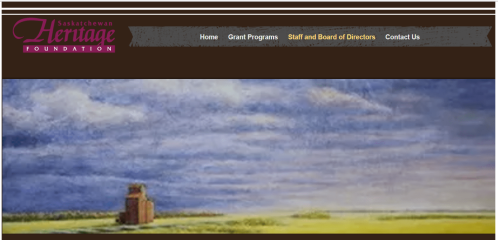
The new homepage of the Saskatchewan Heritage Foundation https://www.saskheritagefoundation.com/
Well, it’s happened: I’m mentioned in the Hansard! (See page 32, under Bill 90, and keep reading).
If you’re not a historian, the Hansard is the record of what is said in the Saskatchewan legislature. It contains the debates, transcribed, as well as the record of visitors, bills being put forward, and shows the province’s political leaders going about the business of government. It’s a great resource to know what’s happening, and to track political debate over time.
So, how did I get there? I wrote an op-ed about the Saskatchewan Heritage Foundation that was published in the Star Phoenix. This op-ed is all about the disparity in support for heritage projects around the province, as well as criticism of the way the current bureaucracy in the Ministry of Parks, Culture and Sport (where the Saskatchewan Heritage Foundation is connected) has been running roughshod over the Foundation.
It’s a hard-hitting piece. I was on the Board of the SHF for three years, and I had a lot to say about heritage in Saskatchewan, and the way the SHF board has been working hard to protect, and fight for, the groups working on heritage projects across the province. In the end, I called for those currently running for the leadership of the Saskatchewan Party to look into the debacle, and get things straightened out.
I’ve since spoken about the issue to sitting MLAs and Saskatchewan Party leadership contenders, because this is an issue that transcends party politics. The SHF has been in existence, helping the people of Saskatchewan for more than 25 years. Heritage is not about politics. It’s about dedicated people fighting hard to save their heritage buildings and cultural landscapes, from north to south, and from east to west across Saskatchewan. Every political party and MLA has a heritage project in their backyard. And the current Ministry officials in the department of Heritage for the province of Saskatchewan are not doing a good job of supporting the SHF, its board, goals, and by extension the people of Saskatchewan.
I’m glad to see some traction on this issue. I understand that the pressure will continue, and I’m encouraged to know that it’s now in the Hansard as a permanent record — even if they accidentally thought that I’m a male, not a female historian.
To sitting and incoming MLAs: keep this on your radar. The people of Saskatchewan expect it: Do better.


